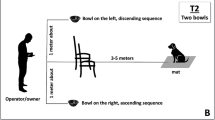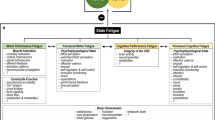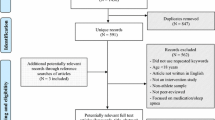Abstract
The spontaneous tendency of people to synchronize their movements to music is a powerful mechanism useful for the development of strategies for tempo adaptation of simple repetitive movements. In the current article, we contribute to such strategies—applied to cycling—by introducing a new strategy based on the sonification of cyclists’ motor rhythm. For that purpose, we developed the SoundBike, a stationary bike equipped with sensors that allows interactive sonification of cyclists’ motor rhythm using two distinct but compatible sonification methods. One is based on the principle of step sequencers, which are frequently used for electronic music production. The other is based on the Kuramoto model, allowing automatic and continuous phase alignment of beat-annotated music pieces to cyclists’ motor rhythm, i.e., pedal cadence. Apart from an in-depth presentation of the technical aspects of the SoundBike, we present an experimental study in which we investigated whether the SoundBike could enhance spontaneous synchronization of cyclists to external music. The results of this experiment suggest that sonification of cyclists’ motor rhythm may increase their tendency to synchronize to external music, and helps to keep a more stable pedal cadence, compared to the condition of having external music only (without sonification). Although the results are preliminary and should be followed-up by additional experiments to become more conclusive, SoundBike seems anyhow a promising interactive sonification device to assist motor learning and adaptation in the field of sports and motor rehabilitation.






Similar content being viewed by others
References
Maes P-J, Buhmann J, Leman M (2016) 3Mo: a model for music-based biofeedback. Front Neurosci 10:1–13
Dubus G, Bresin R (2013) A systematic review of mapping strategies for the sonification of physical quantities. PLoS One 8(12):1–28
Sigrist R, Rauter G, Riener R, Wolf P (2013) Augmented visual, auditory, haptic, and multimodal feedback in motor learning: a review. Psychon Bull Rev 20:21–53. https://doi.org/10.3758/s13423-012-0333-8
Bevilacqua F, Boyer EO, Françoise J, Houix O, Susini P, Roby-Brami A, Hanneton S (2016) Sensori-motor learning with movement sonification: perspectives from recent interdisciplinary studies. Front Neurosci 10:385. https://doi.org/10.3389/fnins.2016.00385
Leake DB, Ram A (1995) Learning, goals, and learning goals: a perspective on goal-driven learning. Artif Intell Rev 9:387–422. https://doi.org/10.1007/BF00849065
Huron D (2006) Sweet anticipation: music and the psychology of expectation. MIT Press, Cambridge
Phillips-Silver J, Aktipis CA, Bryant GA (2010) The ecology of entrainment: foundations of coordinated rhythmic movement. Music Percept 28:3–14. https://doi.org/10.1525/mp.2010.28.1.3
Leman M (2016) The expressive moment: how interaction (with music) shapes human empowerment. MIT Press, Cambridge
Strogatz SH (2003) Sync: the emerging science of spontaneous order. Hyperion Press, New York
Repp BH, Su YH (2013) Sensorimotor synchronization: a review of recent research (2006–2012). Psychon Bull Rev 20:403–452. https://doi.org/10.3758/s13423-012-0371-2
Clayton M (2012) What is entrainment? Definition and applications in musical research. Empir Musicol Rev 7:49–56
Keller PE, Novembre G, Hove MJ (2014) Rhythm in joint action: psychological and neurophysiological mechanisms for real-time interpersonal coordination. Philos Trans R Soc B Biol Sci 369:1–12
Maes P-J, Giacofci M, Leman M (2015) Auditory and motor contributions to the timing of melodies under cognitive load. J Exp Psychol Hum Percept Perform 41:1336–1352. https://doi.org/10.1037/xhp0000085
Van Dyck E, Moens B, Buhmann J, Demey M, Coorevits E, Dalla Bella S, Leman M (2015) Spontaneous entrainment of running cadence to music tempo. Sport Med Open. https://doi.org/10.1186/s40798-015-0030-z
Buhmann J, Moens B, Lorenzoni V, Leman M (2017) Shifting the musical beat to influence running cadence. In: Van Dyck E (ed) Proceedings of the 25th anniversary conference of the European society for the cognitive sciences of music (ESCOM2017), Ghent, pp 27–31
Moens B, Leman M (2015) Alignment strategies for the entrainment of music and movement rhythms. Ann N Y Acad Sci 1337:86–93. https://doi.org/10.1111/nyas.12647
Moens B, Muller C, Van Noorden L, Franěk M, Celie B, Boone J, Bourgois J, Leman M (2014) Encouraging spontaneous synchronisation with D-jogger, an adaptive music player that aligns movement and music. PLoS One 9:e114234. https://doi.org/10.1371/journal.pone.0114234
Fritz TH, Hardikar S, Demoucron M, Niessen M, Demey M, Giot O, Li Y, Haynes J-D, Villringer A, Leman M (2013) Musical agency reduces perceived exertion during strenuous physical performance. Proc Natl Acad Sci 110:17784–17789
Maculewicz J, Serafin S, Kofoed LB (2013) Does a rhythmic auditory feedback help exercising with an auditory instruction? In: International conference on multisensory motor behavior: impact of sound, Leinizhaus Hanover
Bruun Pedersen JR, Grani F, Serafin S (2017) Investigating the role of auditory feedback in a multimodal biking experience. In: 13th international symposium on CMMR, Matosinhos, pp 189–199
Schaffert N, Godbout A, Schlueter S, Mattes K (2017) Towards an application of interactive sonification for the forces applied on the pedals during cycling on the Wattbike ergometer. Displays 50:41–48. https://doi.org/10.1016/j.displa.2017.09.004
Sigrist R, Fox S, Riener R, Wolf P (2016) Benefits of crank moment sonification in cycling. Procedia Eng 147:513–518
Kuramoto Y (1975) Self-entrainment of a population of coupled non-linear oscillators. In: Araki H (ed) International symposium on mathematical problems in theoretical physics, pp 420–422
Driedger J, Müller M (2016) A review of time-scale modification of music signals. Appl Sci 6:57. https://doi.org/10.3390/app6020057
Buhmann J, Desmet F, Moens B, Van Dyck E, Leman M (2016) Spontaneous velocity effect of musical expression on self-paced walking. PLoS One 11:e0154414. https://doi.org/10.1371/journal.pone.0154414
Nessler JA, Kephart G, Cowell J, De Leone CJ (2011) Varying treadmill speed and inclination affects spontaneous synchronization when two individuals walk side by side. J Appl Biomech 27:322–329. https://doi.org/10.1123/jab.27.4.322
Lumsden J, Miles LK, Richardson MJ, Smith CA, Macrae CN (2012) Who syncs? Social motives and interpersonal coordination. J Exp Soc Psychol 48:746–751. https://doi.org/10.1016/j.jesp.2011.12.007
Bentley DJ, Newell J, Bishop D (2007) Incremental exercise test design and analysis. Sport Med 37:575–586
Maes P-J, Lorenzoni V, Moens B, Six J, Bressan F, Schepers I, Leman M (2018) Embodied, participatory sense-making in digitally-augmented music practices: theoretical principles and the artistic case “SoundBikes”. Crit Arts 1:1–2. https://doi.org/10.1080/02560046.2018.1447594
Acknowledgements
We want to thank Ivan Schepers for the hardware development of the SoundBike. This research was conducted in the framework of the EmcoMetecca II project, granted by Ghent University (Methusalem-BOF council) to Prof. Dr. Marc Leman.
Author information
Authors and Affiliations
Corresponding author
Rights and permissions
About this article
Cite this article
Maes, PJ., Lorenzoni, V. & Six, J. The SoundBike: musical sonification strategies to enhance cyclists’ spontaneous synchronization to external music. J Multimodal User Interfaces 13, 155–166 (2019). https://doi.org/10.1007/s12193-018-0279-x
Received:
Accepted:
Published:
Issue Date:
DOI: https://doi.org/10.1007/s12193-018-0279-x




